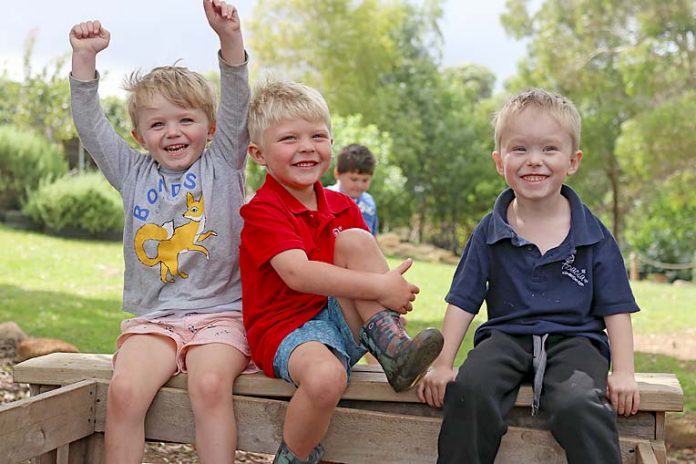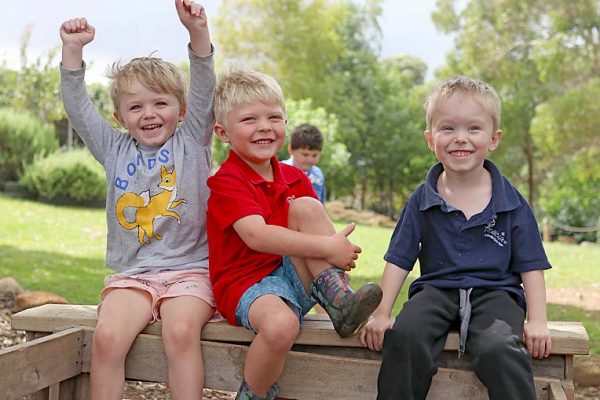

NATURE play areas across the Limestone Coast may be having more of an impact on childhood development than previously thought.
A country-first study conducted by the University of South Australia found outdoor activity improved children’s complex thinking skills, social skills and creativity.
The research consolidated 16 studies that involved unstructured, free play in nature – forest, green spaces, outdoors, gardens – and included natural elements – highly vegetated, rocks, mud, sand, gardens, forests, ponds and water – to determine the impact of nature play on children’s health and development.
It found nature play improved children’s levels of physical activity, health-related fitness, motor skills, learning and social and emotional development.
It also showed that nature play may deliver improvements in cognitive and learning outcomes, including children’s levels of attention and concentration, punctuality, settling in class (even after play), constructive play, social play, as well as imaginative and functional play.
Many Limestone Coast education facilities and the local government sector have embraced nature play areas as a positive way to influence independent learning for the future generation.
Among the sites to adopt the popular design, Acacia Kindergarten’s garden areas have been developed into a natural wonderland for children, with its transformation helping guide the vision for the Mount Gambier Railway Lands.
Facility director Jane MacDonald said the outdoor setting had been organic-based without any structural equipment since the day the site opened its doors.
“Before The Rail was established council visited our site and observed how the children used nature and what was effective for their learning,” she said.
“We believe an open environment allows for endless possibilities for children of all abilities to develop their own learning skills and qualities.
“While touching the earth, climbing the trees or playing with the rocks, they are connecting with nature and learning on their own.”
City Council community wellbeing general manager Barbara Cernovskis said both the Mount Gambier Railway Lands and John Powell Reserve development’s showcased key elements of nature play.
Ms Cernovskis said a significant part of the Rail was its interactive nature play space.
“Unlike conventional playgrounds, this space incorporates a range of naturally-inspired features including mud, sand, logs and water elements which encourage children to reconnect with a natural environment,” she said.
“Council recognises that natural learning environments are better for child development than traditional playgrounds as they provide a place for problem solving, self-assessing risk and interaction and engagement with parents and caregivers.
“Addressing early childhood development delay is one of the priorities outlined in the regional health plan and council’s role is to provide infrastructure and work with other organisations to achieve this.”
Ms Cernovskis said John Powell Reserve was also identified as a opportunity to be developed into a “naturescape”.
“John Powell Reserve primarily functioned as a stormwater retention basin before the City of Mount Gambier moved to convert it into an interactive space designed to increase community outdoor learning and recreational opportunities,” she said.
“The reserve now boasts an exciting set of natural features which have been designed in close consultation with the key user group: young people.
“Climbing logs, rocks and stepping stones, a waterfall and a sand island were all features which were given the tick of approval by local children and residents following a broad public consultation process.”
Being embraced by the community, Ms Cernovskis said both spaces had been valuable tools for child development.
“These approaches to learning through play are becoming more mainstream not just in our city but around the world,” she said.
“There are plans to expand on the natural play space offerings at the railway lands through a generous donation from Out of School Hours Care.
“Consultation will start in the coming months to determine the community aspirations for more infrastructure of this type.”
Acacia Kindergarten confirmed there were plans for future yard development with everything expected to remain nature-based.







